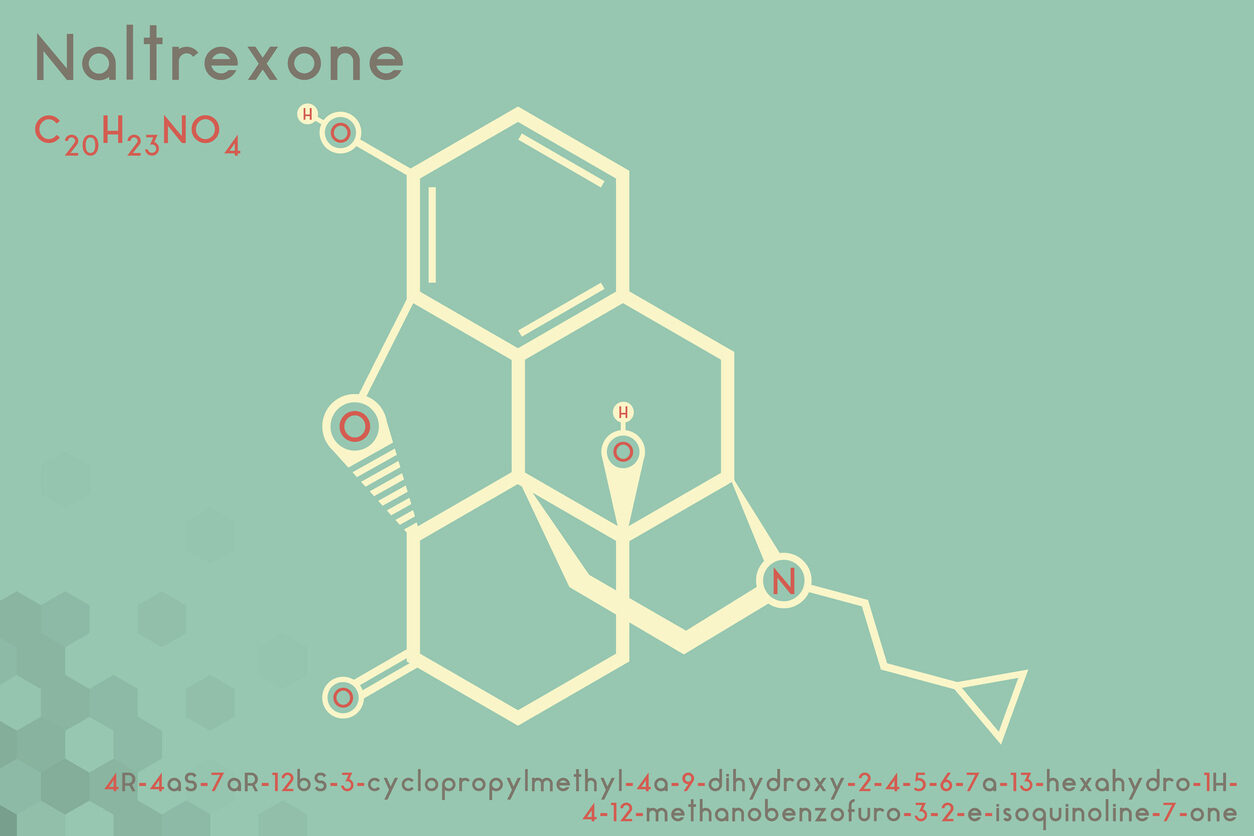Prescription for hope
According to some estimates, chronic pain affects up to 40 percent of Americans, and treating it frustrates both clinicians and patients — a frustration that’s often compounded by a hesitation to prescribe opioids for pain.
A new study from the University of Michigan School of Dentistry confirms that a low dose of a drug called naltrexone is a good option for patients with orofacial and chronic pain, without the risk of addiction, says first author Elizabeth Hatfield, a clinical lecturer in the Department of Oral and Maxillofacial Surgery and Hospital Dentistry.
Naltrexone is a semisynthetic opioid first developed in 1963 as an oral alternative to naloxone, the nasal spray used to reverse opioid drug overdoses. When prescribed at doses of 50 to 100 milligrams, naltrexone blocks the effects of alcohol and opioids.Low-dose naltrexone has been used off-label for years to treat chronic pain, but Hatfield says this is the first in-depth, systematic review of the literature to determine if the drug is indeed a good option for patients and deserving of more formal study.
“We found a reduction in pain intensity and improvement in quality of life, and a reduction in opioid use for patients with chronic pain,” says Hatfield, who hopes to initiate a randomized control trial of low-dose naltrexone.
Low doses of naltrexone (0.1-4.5 mg) work by acting on a unique cellular pathway in the nervous system through which it delivers chronic pain relief without opioids, Hatfield says. If patients are working with a physician to treat pain, it’s appropriate for them to raise the topic of low-dose naltrexone as a possible alternative.
The chronic
Chronic pain is pain that persists for several months, or after the initial injury or trauma has healed, and the way clinicians and scientists think about chronic pain is changing. It’s now thought that some chronic pain has more to do with how our body reports pain to the brain, than the actual injury.
“Normally, chronic pain leads your body to go through a sensitization process whereas your nervous system becomes more sensitive, and this can happen even to nonpainful stimuli,” Hatfield says. “The way I like to explain it to learners or patients is how a sunburn makes you feel, when things that normally feel OK hurt, like a warm shower or a sheet touching your skin.”This concept of the nervous system being sensitized is promoted by cells called glial cells. Low-dose naltrexone targets these cells that keep the nervous system sensitized, thereby reducing the pain threshold and the sensitivity of the nervous system over time.
Traditional pain management has focused on treating the injury or trauma site, but low-dose naltrexone works on the overactive nervous system.
“Low-dose naltrexone begins to address the cause of pain and not just mask it, which allows us to better target diseases causing chronic pain, as well as potentially consider pain control outside of opioid use,” Hatfield says.
It is best used on centralized pain disorders, conditions where the nervous system is in that hyperexcited state, Hatfield says. Those conditions include myalgia, complex regional pain syndrome, and temporomandibular joint disorders, commonly called TMJ, among others. Low-dose naltrexone is inexpensive and has few side effects. However, it’s not an option for people who use alcohol or opioids regularly.
Time to own it
Hatfield became interested in the field of orofacial pain after study co-author Lawrence Ashman, clinical assistant professor of dentistry, started a residency in orofacial pain in 2018. Two years later, Hatfield was the first graduate of the two-year Orofacial Pain Residency program in the OMS/Hospital Dentistry Department.
There are only 13 residencies in orofacial pain in the country, Hatfield says. However, the pain specialty makes sense for dentistry, because this pain is related to joint and muscles surrounding the oral cavity and hasn’t been previously “owned” by dentistry or medicine.
Many patients are first exposed to opioids through dentistry. While there is a place for well-managed opioid treatment for chronic pain patients, alternative treatments are needed, she says.
The study appears in the Journal of the American Dental Association.




Gwendolyn Copeland - 1973
Excellent and informative!
Reply
Maria Coughlin
This sounds wonderful. Are there any doctors using this as a treatment yet? Who and where are they?
Reply